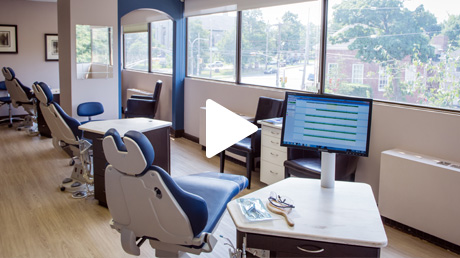Looking—and Feeling—Your Best in Braces
September 2nd, 2020

It’s normal to be a little self-conscious when you first get your braces. Even though you really want to straighten any crooked teeth, or correct a bad bite, you might still be a bit hesitant about sharing your new orthodontic work with the world. What are some ways to get over those under-confident feelings?
- Keep It Clean
Make sure you brush after every meal to reduce the chance of food particles and plaque sticking to your enamel and brackets. Brushing and flossing is particularly important now, not only to prevent cavities, but because nobody wants to see food stuck in your braces—especially you! If you absolutely can’t brush, rinse with water right after eating.
And carry a small bag filled with all the essentials for gleaming braces: a travel toothbrush, floss, a small tube of toothpaste, an interproximal brush, and a handy mirror to make sure you’re good to go. When you know your teeth and braces are their cleanest, you can’t help but feel more confident.
- Express Yourself
Braces are no longer the one-style-fits-all appliances of the past. Traditional metal braces at our Halifax office are more compact, and now come in different colors and shapes. Metal brackets are typical, but ceramic brackets are an option for an almost unnoticeable look. And don’t forget to accessorize!
You can choose from a rainbow of band colors to make a fashion statement that’s uniquely you. Show your spirit with school colors, celebrate the holidays with festive tones, or choose shades that do wonders for your coloring. Whether you go for bold contrast, mono-chromatic subtlety, or “just because I’m in the mood” quirky combinations, let your braces showcase your style. And remember—you can change that style with every adjustment!
- Smile with Confidence
Nothing looks better on you than a confident smile. If you’re a little unsure, practice! Some mirror or selfie time will get you used to seeing yourself in braces. Break them in with friends and family before you go public. Remember that any difficulties with talking or eating should only last a little while.
Above all, you’re still your unique and valued self. You can wear braces and be a good friend, a student, an athlete, a lovestruck Juliet on the theater balcony, a star at your after-school job. Don’t let wearing braces hold you back from the activities you love. Act like your old self, and you’ll soon feel like your old self!
It’s normal to feel a little self-conscious when you first get your braces. But when you care for yourself and your braces, good things happen! If you’re having difficulty adjusting, talk to Dr. Paul Bourque, Dr. Kathy Russell, Dr. Brien Stackhouse, and Dr. Magda Barnard. We want to help make sure your journey to a beautiful, healthy smile is as rewarding and as positive as it can be.












